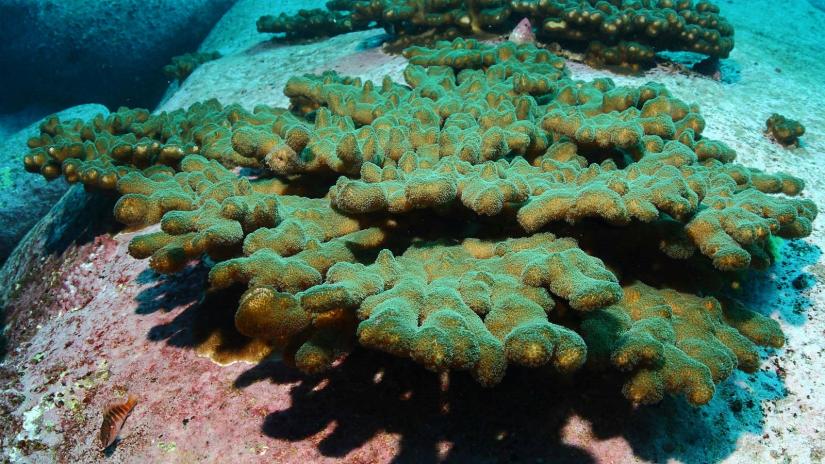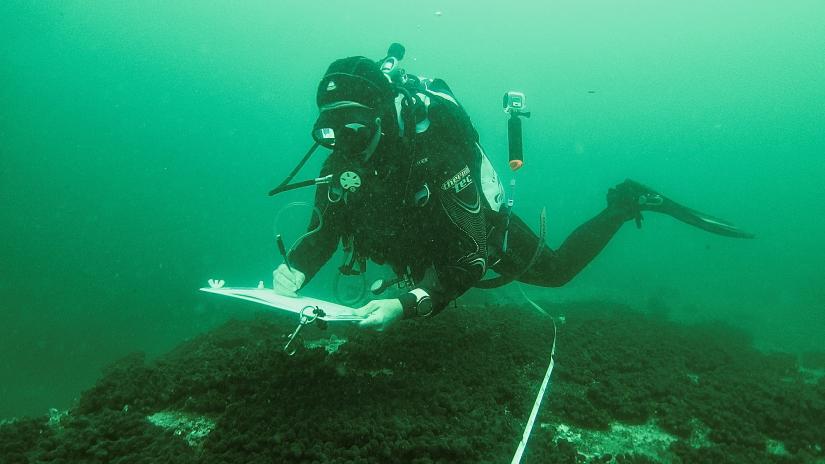
Australian marine biologists report that some stony corals are heading south and away from the equator. Are they dangerous invaders or harmless refugees?
Worsening environmental pressures, such as higher sea temperatures, are causing the catastrophic loss of coral cover around the globe. As the waters of the Great Barrier Reef warm, subtropical corals are heading south in search of cooler waters.
Sydney, where recent research has been conducted, has recently become home to a new subtropical coral, which raises a significant question: could Sydney be a refuge for corals displaced by climate change?
The answer, say coral reef researchers at the University of Technology Sydney (UTS), is yes … but.

A new study, analyzing the metabolism of these new corals under existing and future warming scenarios, found the invading subtropical corals will survive and thrive in coastal Sydney.
Study leader Dr. Jen Matthews, of the Future Reefs Program at UTS, says warming could spell trouble for existing Sydney coral species.
“While we found these corals possess the machinery to withstand large changes in temperature, those temperatures could kill the existing corals in Sydney. This is incredibly important when we consider the future of Sydney’s precious ecosystems,” Dr Matthews says.
“Coastal Sydney falls in the temperate climate zone, so the establishment of subtropical coral populations raises some interesting questions, such as how can they survive at the edge of existence? We are continuing to examine how corals can live and breed in temperate, or suboptimal, environments, and how we might use this knowledge to help us to protect Australia’s reefs into the future.

The study found that the newcomer colonies of Pocillopora aliciae could outcompete a long-established local encrusting coral, Plesiastrea versipora, for space on hard substrate.
In their recent paper, the authors said: “Our data suggest that the subtropical P. aliciae colonising the Sydney seaboard (34° S) can cope better under increased temperature at this location, and hence also under the raising temperatures during the process of tropicalisation, than the native species P. versipora. Although the settlement of P. aliciae in NSW coastal waters currently depends largely on larval recruitment from lower-latitude populations (Cant et al. 2021), which are under severe threat due to heat stress (Kim et al. 2019; Lachs et al. 2021), this might change as this brooder population becomes more established.”
Local Impacts Envisioned
“The ecological services and economic revenue of the Sydney marine environment make it a very valuable ecosystem but it is under continuous threat from climate change and urbanization, causing increased stormwater inflows and habitat modification.”
However, co-investigator Dr. Brigitte Sommer (UTS) says there may be exciting upsides – increasing the biodiversity and complexity of Sydney’s marine ecosystems could bring benefits in terms of refuge for reef fish, coral crabs and potentially other coral species.
“Determining which coral species will be able to migrate poleward in warming seas and how they will interact with local species is critical so we can protect these dynamic ecosystems into the future,” Dr Sommer says.
Researchers from University of Sydney, University of Queensland and Queensland University of Technology also took part in the study.
References
From materials released by the University of Technology Sydney (UTS), 17 June 2022, Sydney, Australia.
The paper Physiological factors facilitating the persistence of Pocillopora aliciae and Plesiastrea versipora in temperate reefs of Southeastern Australia under ocean warming is published in the journal Coral Reefs
González-Pech, R.A., Hughes, D.J., Strudwick, P. et al. Physiological factors facilitating the persistence of Pocillopora aliciae and Plesiastrea versipora in temperate reefs of south-eastern Australia under ocean warming. Coral Reefs (2022). https://doi.org/10.1007/s00338-022-02277-0




